
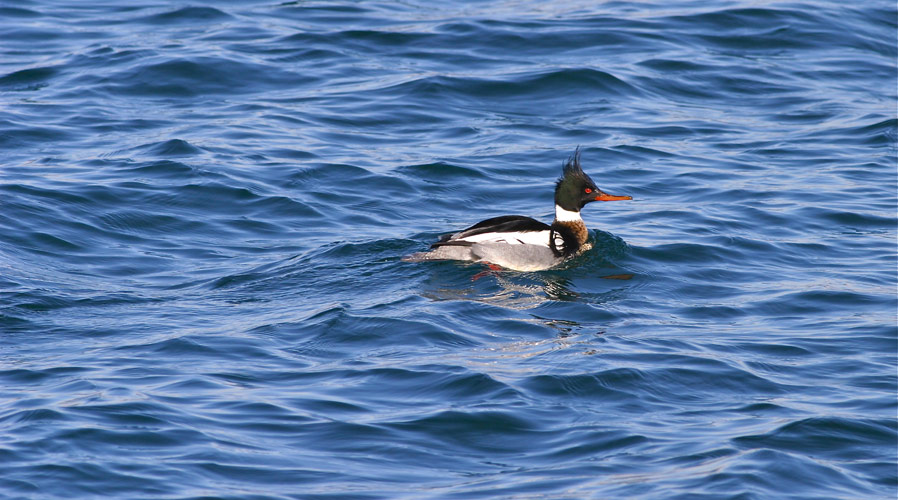
Male red-breasted merganser cruises the waters of Humber Bay this week. © BCP 2010
Oh, those rakish red-breasted merganser males. How jaunty they appear with their black crest flying out behind them, just so. Dashing they may be. But looks are deceiving. From their bold appearance, you might assume these ducks have the devil-may-care behaviour to match. Not so. Red-breasted mergansers, (Mergus serrator), at least the ones I’ve seen along our Lake Ontario shores, seem very wary of humans even when separated by substantial distances. Even with my longest lens and most patient approach, I have been unable to get close enough to one of these diving ducks to get a clear, frame-filling shot.
Red-breasted mergansers are quick on the wing, and, in fact, are one of the fastest flying ducks known. This species has been clocked in flight at 160 kilometres an hour. (I know! It sounds impossible.) They use fast, direct flight — say, as compared to the swoopy flights of some songbirds — with rapid wing beats.
While I haven’t seen them around much — certainly not that often around Ashbridge’s Bay, although they do frequent other lakeside parks — they are widespread across Canada and considered extremely common.


Male mergansers form a swimming line in Humber Bay this week. © BCP 2010
In my Smithsonian Handbook of Birds of North America, it says that mergansers sometimes form a line to drive fish into shallower water to catch them. After seeing three male mergansers swimming about in Humber Bay this week, maintaining a line formation as they went, I wondered whether this is the behaviour described in the guidebook. I’m tempted to think they were just swimming about in the sunshine for the sheer pleasure of it, as they weren’t diving much.
At any rate, a lovely encounter with a comical-looking but very handsome duck.
© BCP 2010
≈

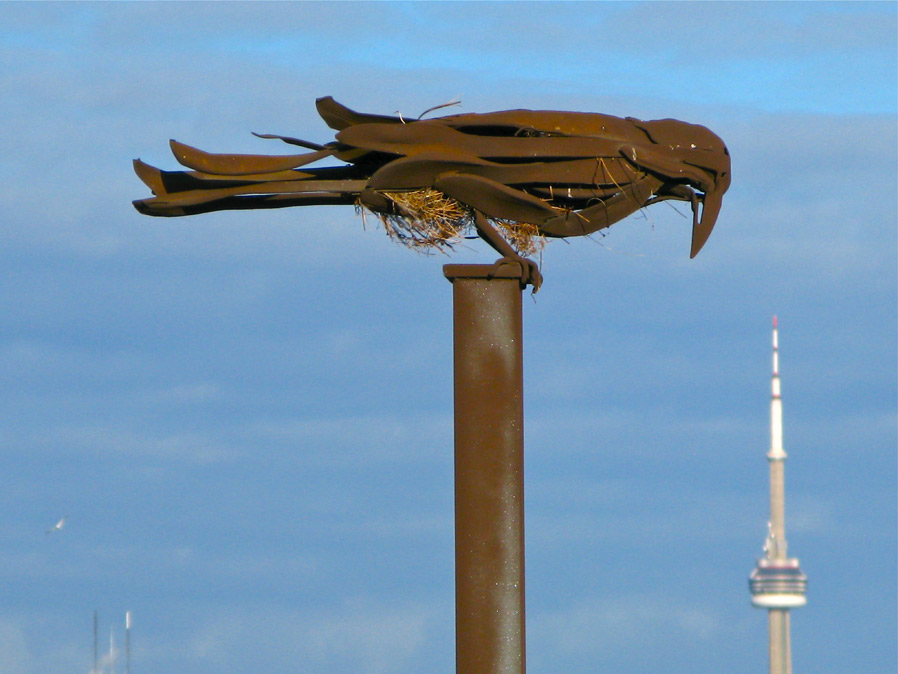
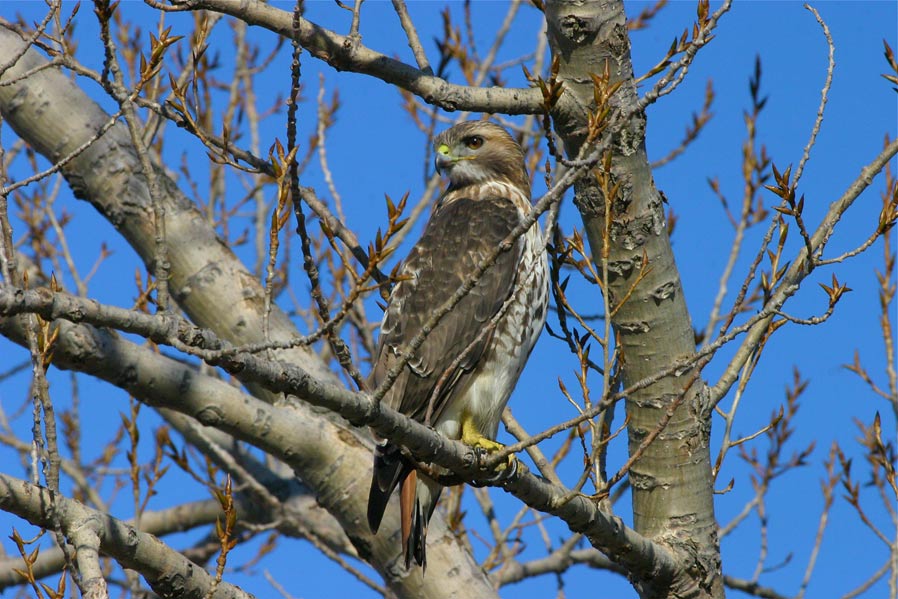
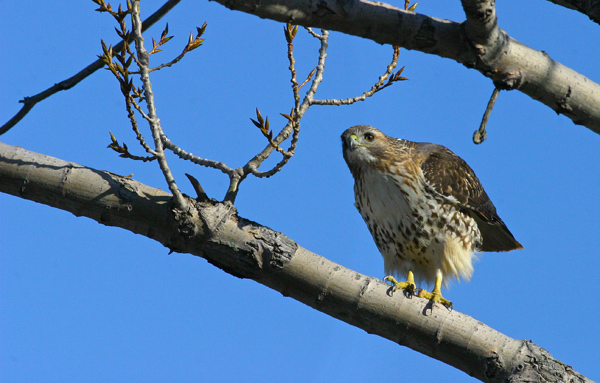
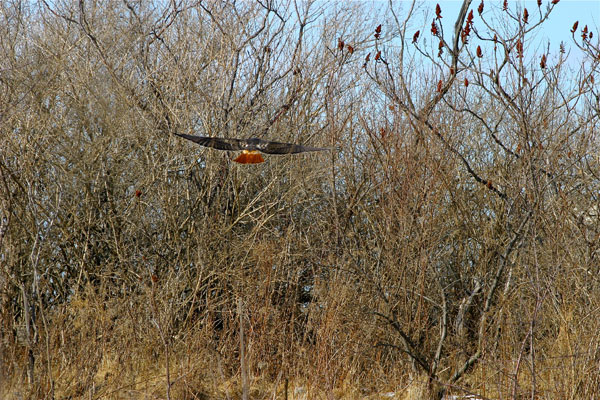
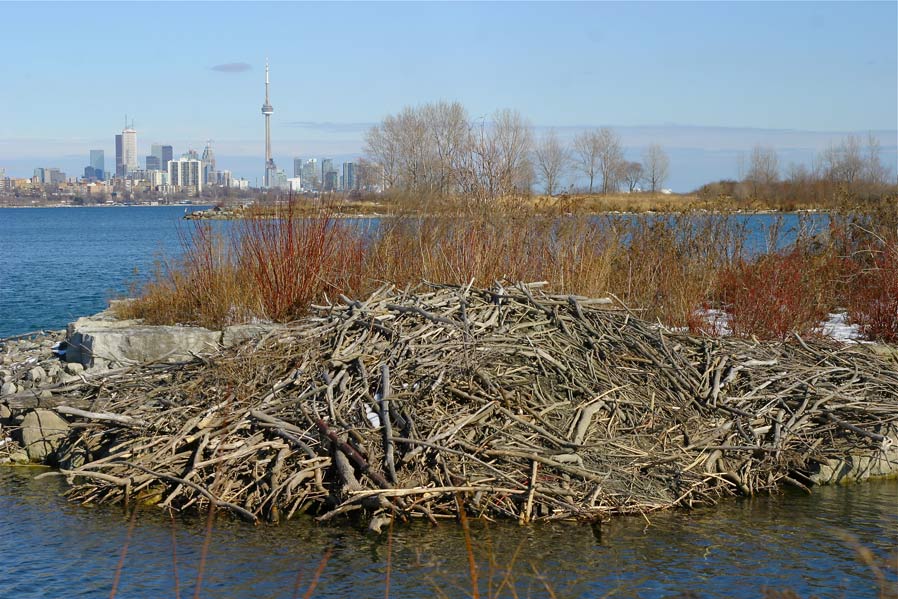
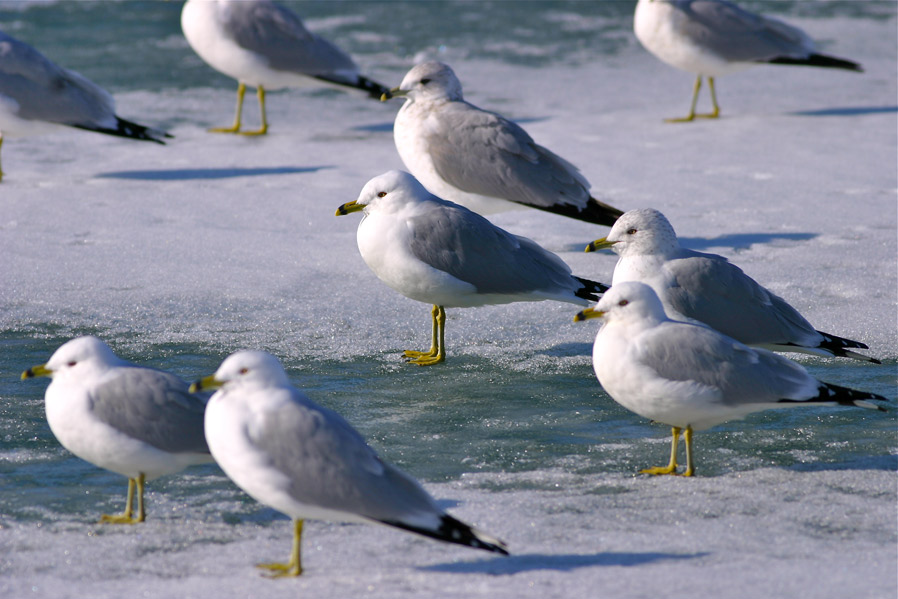

no comments